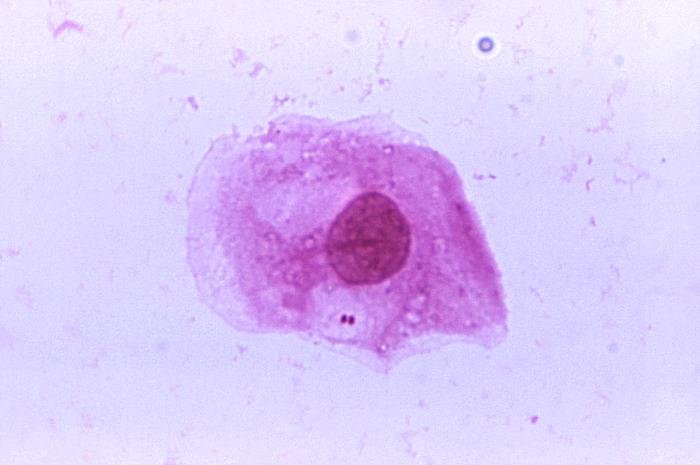Editor’s note: Vital Signs is a monthly program bringing viewers health stories from around the world.
(CNN) — Each year, millions are at risk of outbreaks of meningitis that sweep across 26 countries, known as the ‘meningitis belt.’
The bacterial disease infected a record 250,000 people — and caused 25,000 deaths — during an outbreak in 1996 and numbers have since come in annual waves, with rates of new infections as high 1 in 100 people in some areas.
A second peak of almost 90,000 infections occurred in 2009.
But now, less than 20 years after the record outbreak, elimination of the disease is in sight in this region across Africa — thanks to a vaccine.
“It’s the first vaccine developed solely for a strain that’s Africa-centric,” says Steve David, President and CEO of PATH, the non-profit organization that led the development of the vaccine in collaboration with the World Health Organization (WHO).
As of 13 March 2016, a total of 8184 cases have been reported across the belt this year, with 690 deaths, according to WHO.
Six strains (types) of the bacteria can cause epidemics and are seen globally, but one dominates within this region — Strain A.
“There was simply no vaccine for this strain,” says Davis.
Meningitis is a bacterial disease infecting the lining of the brain and spinal cord and causes death in 5-10% of cases, even if caught early. Those who survive the infection also have a 10-20% chance of brain damage, hearing loss and learning disabilities, according to WHO. Symptoms include a stiff neck, rash, fever, vomiting and sensitivity to light.
People most affected are children under 5 and teenagers as they’re are more likely to encounter the bacteria.
A new vaccine
The new vaccine, known as MenAfriVac, began development in 2001, as part of the Meningitis Vaccine Project (MVP). The project was set up to address the epidemics and prevent them from happening annually.
Less than a decade later the vaccine was ready to go and was first introduced in Burkina Faso in 2010.
Since then, more than 235,000 people have been immunized — aged between 1 and 29 years old– across 16 countries in the belt.
As well as protect individuals, the vaccine also prevents asymptomatic people from carrying the Meningitis A bacteria in their system and spreading the disease without realizing — enabling greater herd immunity.
The result? Near-elimination of this form of the disease.
“It’s gone from high numbers to almost zero…we’re almost at elimination of meningitis A,” says Davis.
A key secret to the vaccine’s success has been its ability to tolerate temperatures of up to 40 degrees Celsius for up to four days. This reduces the need for cold chain storage facilities, as required for other vaccines.
But experts warn that numbers can easily creep back up if immunization rates aren’t maintained.
“We can’t declare victory yet,” says Davis.
Catching all forms of the disease
Whilst rates of meningitis A have fallen drastically, cases will return if national immunization programs fail to include the vaccine into their routine immunizations, particularly now the MVP program has closed.
Eight countries have already applied for funding to do so, and the remainder are expected to follow-suit by 2017.
However, experts also warn that the disease still has five other epidemic strains that could strike, known as B, C, W, X and Y.
The first two are found more commonly in Europe, but cases of Meningitis C have been rising in Africa since 2013, according to WHO.
“There are other strains circulating in Africa,” says James Stuart, an Honorary Professor in Epidemiology at the London School of Hygiene and Tropical Medicine.
Numbers affected by Meningitis C have been rising in both Nigeria and Niger, resulting in 12,000 cases and 800 deaths in these countries within the first six months of 2015, and greater numbers are expected in this year. Cases of Meningitis W have also been reported this year, with 276 cases reported across the belt as of 13 March 2016.
Stuart warns this is not the end of the epidemic and stresses the need to develop a pentavalent vaccine protecting against multiple strains, including A, C, W, X and Y.
Meningitis B is currently not found on the African continent and mainly affects countries in Europe, in cycles. High rates continue to be seen in the UK where 3200 are estimated to get bacterial meningitis each year, according to the Meningitis Research Foundation, and the MenB vaccine was recently introduced as a routine vaccination.
“Most epidemics are in sub-Saharan Africa,” says Stuart.
The need to maintain vaccination efforts remains high.
“The key concern is that strain A doesn’t come back,” says Davis who is determined to ensure the vaccine becomes routine. If it doesn’t experts predict epidemics will return on a large scale within 15 years.
“If we continue on the track we’re on now, though, we can see elimination,” says Davis.
The-CNN-Wire
™ & © 2016 Cable News Network, Inc., a Time Warner Company. All rights reserved.
